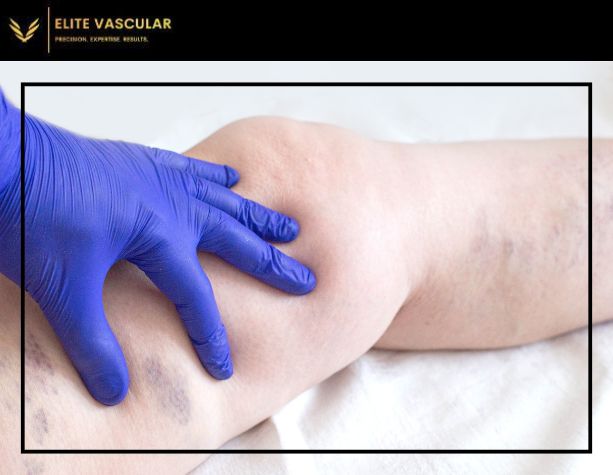- admin
- 0 Comments
The concept of blown veins may be readily associated with medical concerns, and in turn generate significant alarm or even anxiety. In this article, we will explain all the nitty-gritty’s on blown veins – what they are and their possible risks to answer that one big question: Could it have really been fatal?
What Exactly Are Blown Veins?
Blown veins, or ruptured veins as some refer to it are the result of a vein that has been punctured and in this damage blood leaks into surrounding tissue. Which in turn causes bruising, swelling and on occasion pain? While the term blown vein might sound serious, it is something that happens often in health care and usually not as disturbing as what we imagine.
Common Causes of Blown Veins
There are several reasons that blown veins can occur.
Inaccurate IV Insertion: An incorrectly or forcefully inserted needle can puncture a vein.
Apt to break: The veins of older adults, those with certain medical problems and people who have had many IVs set are frail.
Recurrent Needle Punctures: Continual injuries to the same site may cause veins to collapse.
Patient movement: Jerky movements when inserting the needle will allow it to slice right through pairs of vein walls
Symptoms of a Blown Vein
A Blew Vein Identification is a piece of cake as symptoms are;
Bruising: Swelling and dark bruising around the IV site.
Swelling: Blood and other fluids may leak under the skin, causing bruising in or around the puncture site swelling.
Pain or Discomfort: Site maybe tender to touch.
Changes in Vein Appearance: The vein may look flattened or distorted.
Diagnosing a Blown Vein
Diagnosis of a Blown Vein by Medical Professionals Imaging tools such as ultrasound can be used to visualize the entire course of a vein, and in some cases an injection may even be necessary.
Treatment for Blown Veins
The first and foremost goal of the treatment for blown veins is to manage symptoms, relieve pain as well bring about wound healing. Common treatment:
Immediate Care
Apply Pressure: Pressing gently but firmly can help your nosebleeds to stop more quickly and if the bruise is fresh with no breakage you may be able to avoid a full black eye.
Cold Compress: Cold compresses can help reduce inflammation and soothe the pain.
Medical Treatment
Relieving Pain: OTC pain relief medication can also be used to ease these conditions.
Anti-Inflammatory Medications: This may help to decrease inflammation and assist the healing process.
Long-Term Care
Taking a Break: Letting the affected area rest so it has time to heal and avoiding doing too much.
Water: Proper hydration can improve vein health and preventer recovery.
Preventing Blown Veins
But you can take steps to reduce your risk:
- Professional Insertion: The correct term to be used is; Professional Insertion: IV such as Intravenous Line Appropriate Lawful quality insertions by Senior Health persons
- Correct Technique: Needle size and placement.
- Rotating Sites: Instead of Repeated Punctures in the Same Area
- Healthy Hydration: Staying well-hydrated makes blood vessels more flexible and less likely to collapse.
Can it be Lethal if the Vein Collapses?
Blown veins are generally not a life-or-death emergency. They often go away on their own with self-care. The following are the situations where one might face complications and should consult a doctor:
- Infection: Infection of the site can cause illness and more serious health problems.
- Phlebitis: Those blown veins could become inflamed if they are not properly treated
- Hematoma: An over collection of blood outside the blood vessels can be made and it may require a medical precaution.
Also read: Blown Veins Explained: Are They Life-Threatening? to get a deeper understanding of the risks and realities of blown veins.
When to Seek Medical Help
This is why it can help to know what a collapsed vein looks like and when you need medical intervention. Seek help if you experience:
- Severe Pain: This is excruciating pain that cannot be controlled by regular methods of squeezing a muscle outside the body.
- Signs of Infection: redness, warmth or pus at the insertion site.
- Long-term Swelling: the area will not get better by itself with home care.
- Common Blown Veins: Those who regularly blow their veins should get it checked by a health care professional.
Conclusion
Although painful and often dramatic in appearance, blown veins are typically not dangerous conditions. Learning what causes blown veins, spot the symptoms and how to manage plus prevent it from happening will help ease your worries and make IV procedures a better experience over all. With the right kind of care and attention, a blown vein is most times likely to heal even without any further complications.
So, can blown veins kill you? The short answer is no. By understanding how to properly care for your veins, you can mitigate the risks of blown veins and rest easy knowing that blood circulation issues are not going to impact your overall health. But, as always the best way to navigate any medical concerns is by being informed and proactive about your health.
